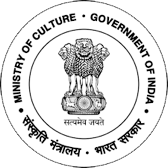- 1-412-680- 2527
-
Parasher Gallery, Nirmalneer,
A-71, South Extension, Part II,
New Delhi 110049
- Email: slparasher@gmail.com

Sponsored by the Ministry of Culture, Government of India.
- the image in fact had to emerge out the depths of the artist’s being. I also had to learn that energy released by the concentrated intensity of aesthetic experience appeared at various points in the human body. The artist, through deep absorption in himself, kindled those points. The artists in the ancient culture had to connect this energy with the cosmic energy of the universe, taking all human impulses into account in the process. There was an irrepressible urge and a devouring desire in me to reach out to higher states of consciousness. I firmly believe that it is by a process of unfolding the layers of consciousness that an artist is enabled to participate in the spectacle of the universal life spirit which merges into the life force of the artist accompanied by the majestic rhythmic cosmic order - the Rta in the cosmos. This joyous experience was manifested by Indian artists, poets and musicians in words, notes and lines in their poetry, music and art. By following the insights of the experience of poets and artists, my creative efforts received direction. I gradually understood that through deep and concentrated absorption in self, the process resolving different elements of correlating the art experience and producing a work of art could be directly and spontaneously realized.
I was thus able to develop my work in accordance with the movements of the pran shakti or the vital life force which gave it a character of gati or life in action. Prana, or the vital universal life force, carries the artist’s consciousness upwards to higher and higher states. There is no occasion for the artist to make a conscious effort to will or form an image.
It is significant that in the Indian tradition the art experience, the process of visualization, and the work of art were a simultaneous and single action, automatic and autonomous. I have noted that in paintings, gati, or movement in pran shakti, forces a specific impress in the lineaments of my work. It also unconsciously indicates the monumental nature of a configuration suitably transferred to walls of public buildings. Proportionate scale, its reposeful, harmonious and linear character, suits a mural view. It can not have any of the arcane or obsolescent influence unavoidable in easel painting. I maintain that it is by dwelling in the creative well of my being that I am able to seek guidance and direction from the aesthetic insights and realizations of the ancient seers. Intensive attention is the art experience from formation to completion. In our culture yoga is an efficient technique for this purpose; however, I found kala, or art, can kindle creative forces more forcefully. I do believe that I have been able to explain in my works the relevance of the guidelines affirmed in the realizations of ancient Indian thought. I do not, however, claim that I have fully observed them or achieved their goals. What I can claim is that this approach to work has gained me very much. It is neither conceptual nor schematic. Its individuality, I can say, is deeply intuitive and mirrors the movements and ascent of prana shakti within the pool of creativity. All of this is what I mean when I describe my approach as pranantarik.
S.L. Parasher 1989 - New Delhi
SHARE THIS PAGE!